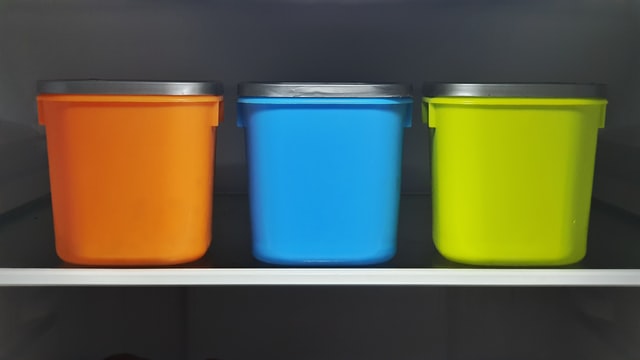BPA, or bisphenol A, is used in polycarbonate products to strengthen the plastic, reduce the risk of heat deformation, and to line metal food containers that could otherwise be at risk of rusting. Over time, there is a risk of BPA migrating to the food product inside the container. Because BPA can act as an endocrine disruptor, the concerns about bpa chemicals exposure are particularly important to those preparing food and drink for children. Here are three ways to reduce your exposure to BPA.
Look for Non-Reactive Food Containers
When shopping and cooking, look for glass food containers. This is particularly important when shopping for acidic foods, such as tomato sauces. A can of tomatoes is more likely to leach bpa chemicals from the resin lining than other food products.
As possible, buy your tomato sauces in glass jars, or look for frozen tomato products that you can thaw, season, and eat. If you have a source for raw tomatoes when gardens are producing, consider preparing your own homemade tomato sauce and sealing it in a vacuum bag to capture the fresh flavor before using up the sauce later in the season.
To that end, make sure you keep an eye on canned goods in the cupboard. Time has an impact on the amount of BPA leached. If you find a canned food that has been in the cupboard and is past the “use by” date, especially if it contains tomatoes, discard it.
Never Heat Food in Plastic or in a Lined Can
If you are microwaving food formerly stored in plastic or heating food in a lined can, move it to a glass container or food-safe ceramic dish first. Stainless steel obviously won’t work in the microwave, but you can make the same transfer when using a microwave.
Because most portable stainless food containers are quite thin and lightweight, they should never be heated directly. Instead, if the food inside the stainless container is frozen and won’t come out of the container onto a non-reactive plate for microwaving, run hot water over the exterior of the container to break the seal. It should slip out easily at that point.
Many who cook on woodstoves will set a can on the hot surface to warm things up. While this worked well in the days of steel tins, the practice should no longer be considered safe. Get your canned food into a non-reactive cooking pot before applying heat.
Watch the Numbers
Review the numbers on the bottom of your plastic containers, especially if you reuse containers from other products you buy. For example, putting cooked stew in a sour cream tub and freezing it to use as leftovers will not likely release a great deal of BPA. If the number on the bottom is a 2, meaning it is made up of polyethylene plastic, your risk will remain low as the food thaws.
If you notice that the code on the bottom of the container is a 7, it is a polycarbonate plastic and should not be reused for foods of any temperature. The addition of heat to this plastic increases your risk.
Store Leftovers in Plastic Free Containers
When you’re putting away leftovers, consider using plastic free food storage options. Stainless steel containers can be a great option for lunch leftovers. For those who need to heat something up at the office, keeping a ceramic or glass plate or bowl for your use can also help.
You can also use glass containers of all sizes, sealed in a silicone bag or covered in a press, and seal resealable plastic. If you plan to reuse a glass container that once used pickles, carefully sniff the lid. The glass of a pickle jar will not hold on to the smell, but the seal on the lid may never give it up. Be aware that glass dishes designed to hold leftovers may have the same problem; the bowl lasts forever, but the plastic or silicone lid will fail over time. Resealable plastic and reusable bags can help keep foods in the container.
The impact of bpa chemicals on the human body is generally not known for years. Avoid adding heat to plastics whenever possible to prevent additive leaching. Glass, food-safe ceramics, and stainless steel are quality non-reactive products that can handle heat without altering your food.


